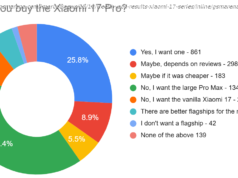After over a decade, AMD is ready to slug it out with Intel in the high-end workstation and desktop space. Ryzen isn’t a perfect chip, but it packs one hell of a wallop in certain tests.
After years of waiting, AMD’s Ryzen has finally arrived. The company has spent years in the proverbial desert, struggling with Bulldozer improvements while simultaneously designing its new Zen architecture. It’s no exaggeration to say AMD’s future as a PC company literally depends on Ryzen’s success.
AMD has positioned Ryzen aggressively with price points that match extremely favorably with Intel’s Core i7 family and HEDT desktop parts, but there have always been questions about how well Ryzen would perform. It’s been years since AMD fielded a high performance CPU design and the company doesn’t have the same market share it once commanded. If the company is serious about pushing Ryzen into workstations, consumer PCs, and servers, it’s got a very high bar to clear.
Today’s review will focus on performance, rather than rehashing Ryzen’s design or architecture. Anyone with questions is invited to peruse those articles or ask in comments below. Before discussing Ryzen’s performance, however, we need to talk about its launch. Normally, a manufacturer gives us 7-10 days at minimum; the more significant the product, the longer the review window. AMD bucked this trend by launching Ryzen less than a week after we received our hardware kits. Because I’d previously committed to attend Nvidia’s GTX 1080 Ti launch at GDC, I only had 60 hours to test the Ryzen 7 1800X.
As short as our review window was, I may have gotten lucky. In at least a few cases, reviewers didn’t receive their kits until 24-48 hours before the launch. I’ve run enough benchmarks on the Ryzen 7 1800X to feel comfortable characterizing this article as a review, but it’s also something of a hot mess. I suspect you’ll see wide variation in reported benchmarks and experiences; don’t be surprised if different people have different results.
The limited testing time was exacerbated by the motherboard AMD shipped us for testing. Asus has a well-deserved reputation for quality, but my Crosshair VI Hero threw so many errors, AMD ultimately concluded I might have a bad board, not just a wonky BIOS. To be clear: I was scarcely the only reporter to experience problems or see odd performance, but our board seems to have been at the low end of the bell curve. Both Asus and AMD worked with us extensively and their assistance was much appreciated, but extensive troubleshooting still cut deeply into my test time. After switching to a Gigabyte Aorus X370 motherboard I retested our game benchmarks — beginning around 12 AM this morning. While the Gigabyte motherboard did improve the situation slightly and was markedly more stable, it didn’t resolve the gaming Achilles here I referred to in the title (we’ll be exploring that issue in greater detail below).
As a result, our tests are not as thorough as we would have liked. We redesigned our CPU benchmark suite in preparation for Ryzen, but didn’t have time to run every CPU through every new test. Because we needed to test in parallel, not every CPU could be benchmarked with the same cooler or the same SSD. We chose the tests we did partly to ensure that these differences would not meaningfully impact our results, and our future deep dives into the chip will standardize on common hardware once again.
With those caveats in mind, let’s check the numbers.
We’ve expanded our CPU test suite since the Core i7-7700K launched, but didn’t have time to run every test on every processor.






